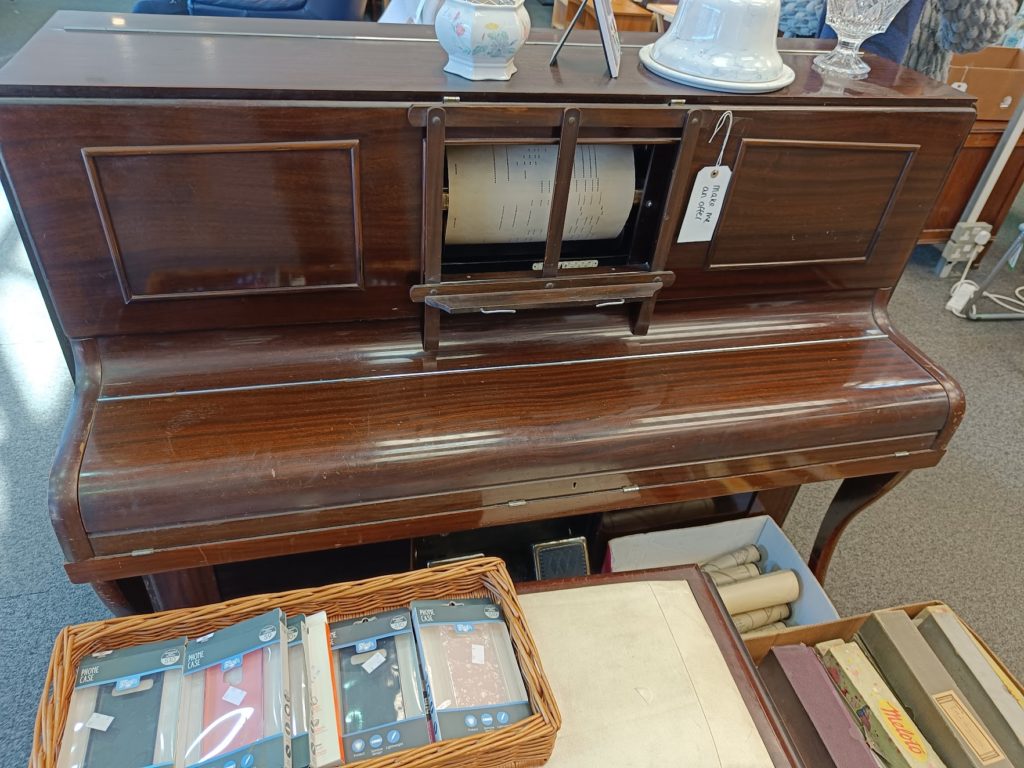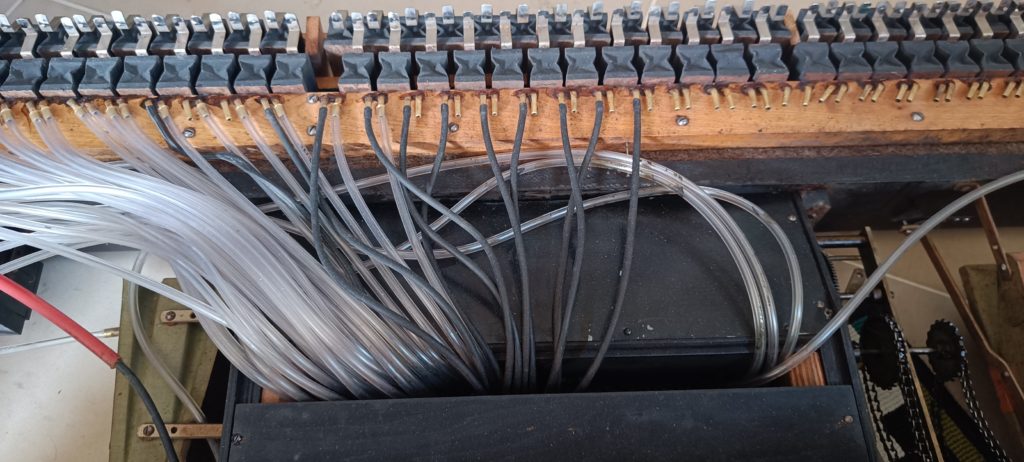I went to the dentist and ended up buying a pianola. A pianola (player piano) is an automatic piano that plays music from rolls of paper with holes cut in it, like a computer punch card. Most dentists do not sell pianolas and focus almost exclusively on dental health and plastic surgery but we found ourselves uncharacteristically early for our appointment so popped into a nearby charity shop and there I found it.

I wasn’t aware that I had always wanted to own a pianola until I learned they were completely air powered, kind of like a huge wooden stringed accordion. The manager of the charity shop urged me to “seize the day” and realise my one-minute-long dream because it was taking up a lot of space in her shop and nobody else wanted it. She was at least honest enough to tell me it took five men to move it in so it would be quite a job to get it home.
I called a piano moving company who sent just two men and a young lad whose job it was to open doors. The two men were admittedly very large – easily the combined volume of five smaller men, though costing me less to employ. They did an excellent job so barely two days after first seeing it, I had a pianola.
I looked around on ebay and Facebook to figure out how much money I should pay the charity shop for it but they’re basically free because they take up a lot of space and nobody else wants them. So, I just gave them £30. All in with the delivery costs it was around £150.
State of disrepair
I watched all twenty videos there are about pianola restoration on youtube to become a complete expert in pianola restoration and started taking it apart. The main problem is that most of the eighty-five+ rubber tubes have completely perished and fallen down into the keys, jamming them up too. Some of them have previously been replaced with clear vinyl tubes and those look ok. The eighty-five little key actuator bellows are seemingly in good condition. One or two of the eighty-five hammer mechanisms aren’t working quite right. And every one of the eighty-five keys are dirty. The eighty-five+ strings look ok – none of them broken or rusty. The whole thing is surprisingly tuned kind of well, just one tone down. Knowing little about pianos I’m going to assume that means it has been dropped only once since it was last tuned. The hammers have deep string grooves in them and everything is a bit dusty. No signs of it having been stored anywhere damp.
While researching other pianolas for sale, I actually found an old listing for this very one by the original owner – they’d failed to sell it and given it to the charity shop. I contacted her and learned that her grandad had bought it new over fifty years ago and they’d had some restoration work done on it about 25 years ago. It’s been kept indoors the whole time – never seen a damp cellar or garage! Amazing luck.
Looking inside I found a label showing its manufacture date as February 1938.
Anyway, I’ll post a bit more as I go along.

